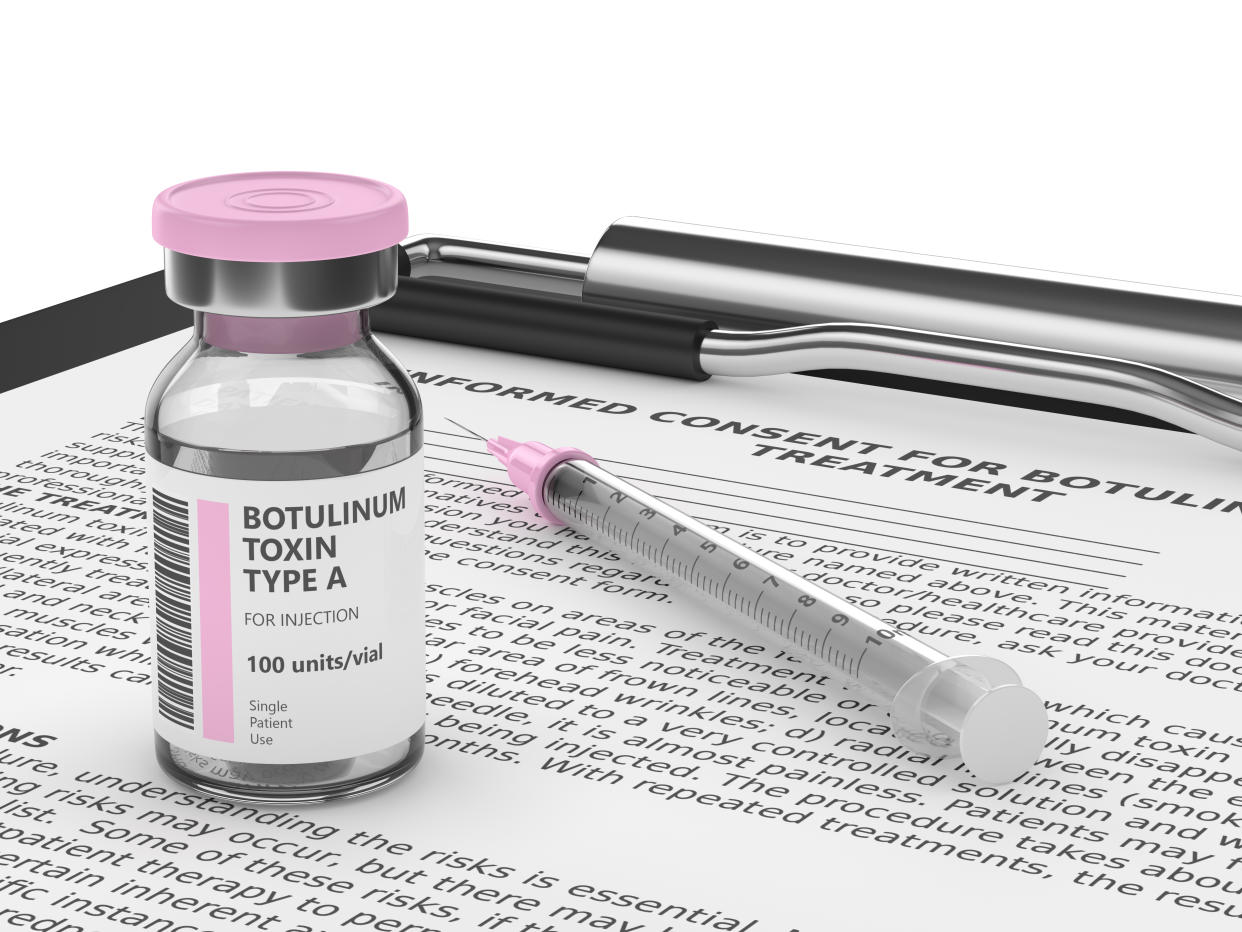5 surprising Botox uses that have nothing to do with wrinkles

Botox is an FDA-approved injectable treatment not only for smoothing and tightening lines that come with aging, but for a host of other surprising issues, including hyperhidrosis, aka excessive sweating — much to the chagrin of superstar Zoe Kravitz. “That is the dumbest, scariest thing I’ve ever heard,” she told Vogue. “Don’t do that — sweating is key.”
Does Kravitz have a point? And what other uses are there for Botox?
The drug Botulinum Toxin Type A, for starters, is a neurotoxin derived from botulism microbes, and one of its main effects is to induce temporary paralysis by blocking signals from nerves to muscles — such as those in one’s face which, when they can no longer contract, can no longer cause forehead lines and crow’s feet.
Excessive sweating
For the purpose of putting a stop to over-perspiration — an FDA-approved use for the armpits, and an off-label one for other areas, including palms — Botox can be extremely successful, studies find, and stops excessively sweaty palms in 80 to 90 percent of cases. Kravitz likely need not worry about the treatment, which is only for those whose sweating “exceeds the needs of the body,” in what is medically termed hyperhidrosis and actually quite common, affecting up to three percent of the population, according to internist Celeste Robb-Nicholson, M.D. and editor-in-chief of Harvard Women’s Health Watch.
Other treatments include antiperspirants; iontophoresis, which involves keeping the affected area submerged in water while a mild electric current passes through; oral medications; and, in severe cases, the surgical cutting of sweat-gland nerves.

TMJ
The first hint that Botox could be helpful in treating pain from TMJ — Temporomandibular joint disorder, aka stress-clenching one’s jaw or grinding one’s teeth — came by accident, according to a study, when it was “observed from anecdotal reports of patients treated for hyper-functional facial lines who reported reduced frequency and severity of headache.” Today, it notes, Botox is used for pain relief in numerous conditions including tension headaches and migraines, and works by blocking the muscle activity that leads to pain.
Although small studies — as well as anecdotal reports — have found Botox to be effective for TMJ, it’s still considered an off-label, or experimental treatment, as it’s not one that’s been approved by the FDA. Side effects may include nausea, redness or bruising at the injection site, muscle weakness and, sadly, headache.
Overactive Bladder
As many as 30 percent of men and 40 percent of women deal with symptoms of Overactive Bladder (OAB), which can range from sudden, uncontrolled urges to leakage and incontinence. The FDA approved Botox for treatment of this in 2013, and since then, at least two studies have found the injections, which temporarily stop nerve signals from telling the brain the bladder must urgently empty, to be safe and extremely effective.
“The injection allows the bladder to relax and fill up more before needing to go, Ariana L. Smith, MD, associate professor of urology and director of Pelvic Medicine and Reconstructive Surgery at the University of Pennsylvania, told Penn Medicine News. “It can also give patients greater control by restoring continence, which provides symptom relief.”
Foot Pain
Some types of foot aches, including plantar fasciitis, an inflammation of the tissue connecting the heel bone and toes — have shown improvement following Botox injections, with one small study showing it to be more effective than steroid treatments. “Botox can be used to treat a variety of conditions in the feet and lower extremities such as overactive sweating of the feet or tight muscle and tendon contracture of the calves, which can arise from wearing high heels or from other acquired conditions,” Albert D'Angelantonio, DPM, FACFAS, chief of Podiatry/Foot and Ankle Surgery in Plastic Surgery at the University of Pennsylvania, told Penn Medicine News.
Crossed Eyes
Surprisingly, treating strabismus — or a crossed eye — was the original intent of Botox injections, which have been used for such treatments since the 1970s. “Patients who had uncontrolled blinking or had narrowed or closing eyelids were among the first to see the benefits of this treatment,” said D'Angelantonio. “The cosmetic uses of the treatment came afterward.” Researchers noted in 2017, however, that “further high-quality trials” were still needed to test the effectiveness of Botox vs. other strabismus treatments.
Read more from Yahoo Lifestyle:
Follow us on Instagram, Facebook and Twitter for nonstop inspiration delivered fresh to your feed, every day.


